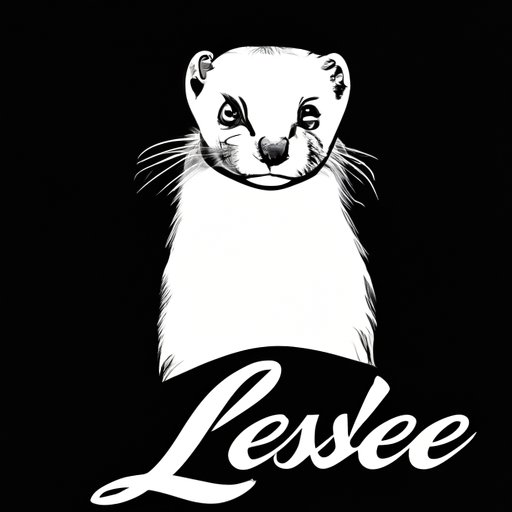Introduction
If you have ever encountered a sable or heard of the term before, chances are you are intrigued by this fascinating animal and its connection to various aspects of our lives. In this article, we will take a comprehensive look at what is a sable, exploring its biology, cultural significance, uses in art and fashion, conservation efforts, and even the world of owning and appreciating sables. Whether you are an animal lover, an artist, or a concerned citizen interested in environmental topics, we hope this article will provide you with a deeper understanding of sables and inspire you to take action to protect them.
The Sable: Understanding the Biology and Natural Habitat of this Fascinating Creature
The sable is a small to medium-sized mammal belonging to the family Mustelidae, which includes weasels, otters, ferrets, and badgers. The scientific name for the sable is Martes zibellina, and it has several subspecies distributed across Eurasia, from Russia to China and Mongolia. Sables have a distinctive appearance, with dark brown fur and a lighter underbelly, and are known for their bushy tails and long, slender bodies. Sables are mostly solitary and nocturnal, and they prefer living in boreal and temperate forests with a dense understory, where they can find prey and shelter.
Sables play an essential role in the ecosystem, helping to control rodent populations and providing food for predators like lynx, foxes, and eagles. Sables are also prized for their fur, which is soft, dense, and luxurious, making them a target for the fur trade.
Exploring the Role of Sables in Russian Folklore and Culture
Sables have a long and rich history in Russian culture, where they have been valued for their fur and associated with wealth, status, and luxury. Sables have appeared in Russian folklore, folk songs, and literature, often as a symbol of beauty, cunning, or mystical power. In some tales, sables are depicted as helpers or protectors of humans, while in others, they are portrayed as tricksters or shape-shifters. Sables have also been used in traditional Russian costumes, jewelry, and decorative arts, showcasing their aesthetic appeal.
The Fine Art of Sable Brushes: History and Uses
Sables are not only admired for their fur but also for their hair, which is highly valued by artists and calligraphers for its superior quality and performance. Sable brushes are made using the hair from the tail or belly of sables, which is carefully selected, cleaned, and sorted. Sable brushes have a unique combination of flexibility, durability, and water-holding capacity, allowing artists to create fine lines, washes, and textures with precision and control. Sable brushes are used in various media, such as watercolor, oil, acrylic, and ink, and are favored by many professional artists and art students for their versatility and beauty.
Sables and Conservation: Examining the Threats to Sable Populations and Conservation Efforts
Despite their importance and beauty, sables face numerous threats to their survival, both natural and human-caused. Habitat loss due to logging, clearing, and climate change, as well as hunting and poaching for their fur, have led to a decline in sable populations in various parts of their range. Fortunately, there has been a growing awareness and effort to protect sables and their habitat, both by local communities and governments, and by international organizations and treaties. Conservation measures include habitat restoration, anti-poaching campaigns, captive breeding, and eco-tourism, promoting alternative ways of using sable resources sustainably.
From Fur Trade to Fashion: The Debates Over Sable Fur and Alternatives
The use of sable fur in fashion and luxury goods has been a controversial and contested issue, sparking debates about animal welfare, ethics, and sustainability. While some argue that the sable fur trade provides livelihoods and cultural heritage for people living in sable-inhabited regions and that sable fur is a natural and renewable material with unique qualities, others criticize the fur industry for its cruel and unnecessary killing of animals, its negative environmental impact, and its promotion of outdated and harmful social norms. As a result, alternatives to sable fur have been developed, such as faux fur, recycled fur, and plant-based fibers, offering consumers options that are more humane and environmentally friendly.

Sable Society: Inside the Secret World of Sable Ownership and Appreciation
For some, sables are not just an animal species or a material resource but a hobby and passion, an object of admiration and affection. Sable owners and enthusiasts come from various backgrounds and interests, from hunters and breeders to collectors and pet lovers, and they share a fascination for these intriguing creatures. Sable ownership, however, comes with responsibilities and ethical considerations, such as providing proper care, avoiding illegal trade or exploitation, and contributing to conservation efforts. Sable appreciation, on the other hand, involves learning about the biology, behavior, and cultural significance of sables and how we can appreciate and respect them without causing harm or damage.
Conclusion
As we have seen in this article, sables are not only beautiful and fascinating but also complex and important creatures, intertwined with various aspects of our lives, from culture and art to conservation and commerce. Whether we encounter sables in their natural habitats or through various products and representations, we can learn from them and appreciate their unique qualities and contributions. However, we also have the responsibility to protect them and ensure that our interactions with them are sustainable and respectful. By valuing sables, we can also value ourselves and our relationship with the natural world.
